Cloth Diapering Made Simple: Your Step-by-Step Guide
Let’s be real: cloth diapering might sound like something your grandma used to do, but it’s making a comeback (and no, it’s not as messy as it seems!).
If you’re wondering how to master the art of cloth diapers without losing your mind – or your laundry room – this guide is for you. We’ll walk you through each step, sprinkle in some pro tips, and have you cloth-diapering like a pro before you know it.
Fewer blowouts, less waste, and a lot more cute baby bum pics – what’s not to love? Let’s dive in!
Why Choose Cloth Diapers?
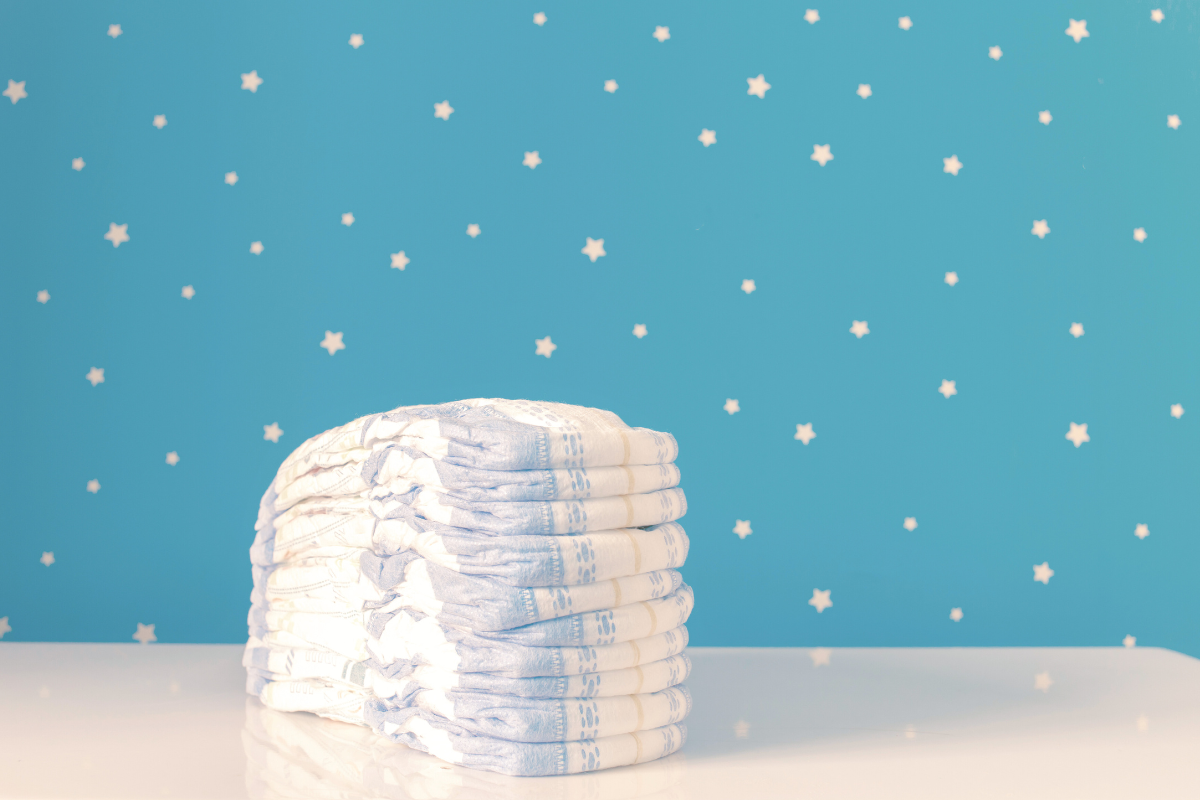
Choosing cloth diapers is more than just a way to save money—it's a simple shift that benefits both your baby and the planet. Plus, it's not as tricky as you might think.
Let’s break down why so many parents are embracing cloth diapers today.
-
Cut down on landfill waste. Reusable cloth diapers mean fewer disposable ones clogging up landfills. Instead of throwing away thousands of diapers, you can reduce environmental waste significantly by choosing cloth.
-
Conserve water and resources. While cloth diapers need washing, they still consume less water overall compared to the vast resources required to manufacture disposables. Plus, they’re made from renewable materials, which helps lessen the environmental impact.
-
Save money over time. Yes, the upfront cost might seem hefty, but cloth diapers are reusable—sometimes for more than one child! Families can save between $500 to $3,000 over time just by opting for cloth diapers over a disposable diaper.
-
Gentler on sensitive skin. Cloth diapers are free from the chemicals you’ll find in most disposables. Made from soft, breathable fabrics, they can prevent diaper rash and irritation provided that you know the proper way of caring for them.
-
Encourages early potty training. Cloth diapers let babies feel when they're wet, which can speed up potty training. Kids become more aware of their bodily functions, helping them transition to the next stage faster.
-
Resale value. Once your cloth diaper journey is over, they’re still valuable! You can sell them on the second-hand market, giving other families the chance to benefit and recouping some of your costs in the process.
Types of Cloth Diapers Explained
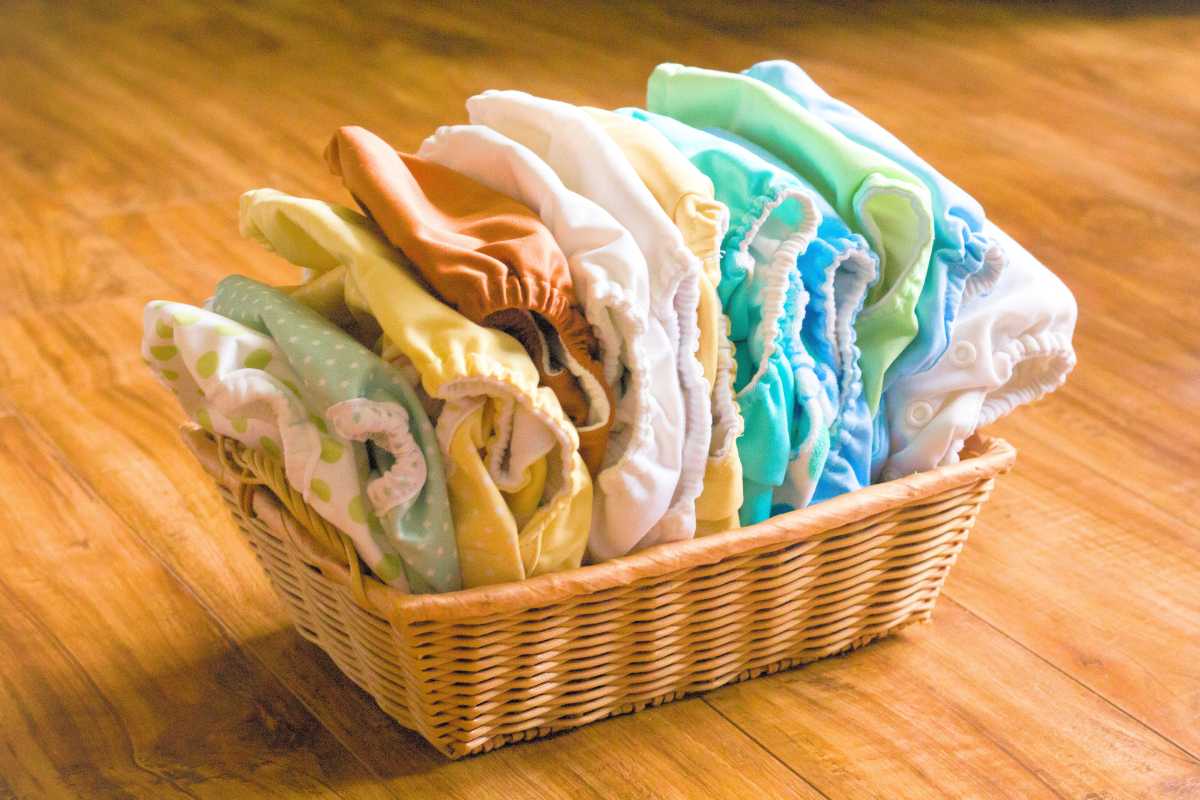
Cloth diapers are available in various types to meet different needs. The most popular types of cloth diapers include prefold cloth diapers, all-in-one cloth diapers, and pocket cloth diapers online. Let's discuss them in more detail.
Prefold Cloth Diapers
Prefold cloth diapers are a tried-and-true option for parents looking for an affordable, reliable solution.
These rectangular diapers are divided into three sections, with the outer layer and the middle panel designed to be more absorbent. Prefolds require folding and must be paired with a waterproof cover to prevent leaks. While this diapering method dates back decades, it remains popular among parents seeking cost-effective diapering.
Prefolds are especially great for heavy wetters and can be customized for a snug fit. Despite the learning curve, many parents appreciate the control over absorbency and fit. They're a favorite for families aiming to balance functionality with affordability.
Pros
-
Highly absorbent for heavy wetters.
-
Cost-effective and budget-friendly.
-
Customizable fit based on how you fold them.
Cons
-
Requires additional waterproof covers.
-
Folding takes practice.
-
Bulky compared to other cloth diaper options.
All-in-One (AIO) Cloth Diapers
All-in-one cloth diapers are perfect for parents who want convenience without sacrificing eco-friendliness.
These diapers combine an absorbent layer with a waterproof cover in one piece, eliminating the need for extra inserts or covers. They fasten easily, making them as simple to use as disposables. AIOs are especially popular among new parents or caregivers looking for a diaper that's easy to manage.
Though they come with a higher price tag and take longer to dry due to their waterproof outer layer, many parents find the ease of use worth the investment. Just fasten, use, wash, and repeat—no assembly required.
Pros
-
Super convenient—no need for extra inserts or covers.
-
Simple to use, making them great for beginners.
-
Easy to secure with adjustable closures.
Cons
-
Higher upfront cost.
-
Longer drying times due to thick absorbent layers.
-
Limited customization for absorbency.
Pocket Diapers
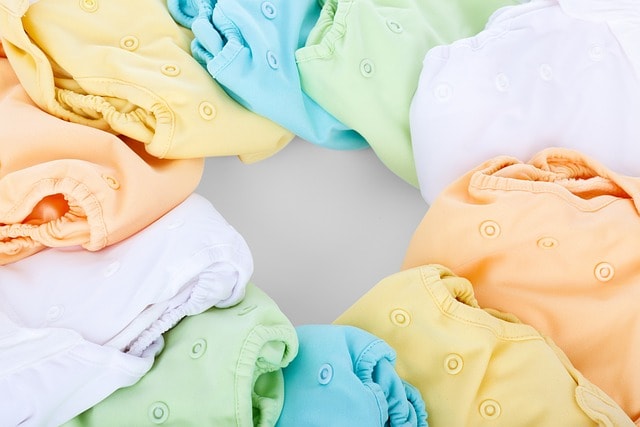
Pocket diapers offer a flexible solution for parents who want more control over their baby's absorbency needs. These diapers feature a waterproof outer shell and a pocket where absorbent inserts are placed. Parents can choose different inserts, like microfiber or bamboo, depending on their baby’s needs. They are quick to dry, and the ability to customize absorbency makes them ideal for both day and night.
Pocket diapers resemble disposables in convenience but need to be washed entirely after each use. Many parents love pocket style diapers for how they can be tailored to meet their baby's specific needs, though the need for full washes after each use can be seen as a drawback.
Pros
-
Highly customizable absorbency with different insert options.
-
Quick to dry compared to all-in-one diapers.
-
Easy to use, similar to disposable diapers.
Cons
-
Requires full washing after each use.
-
Inserts need to be placed and adjusted before each wear.
-
Can be more expensive due to needing separate inserts.
How to Use Cloth Diapers
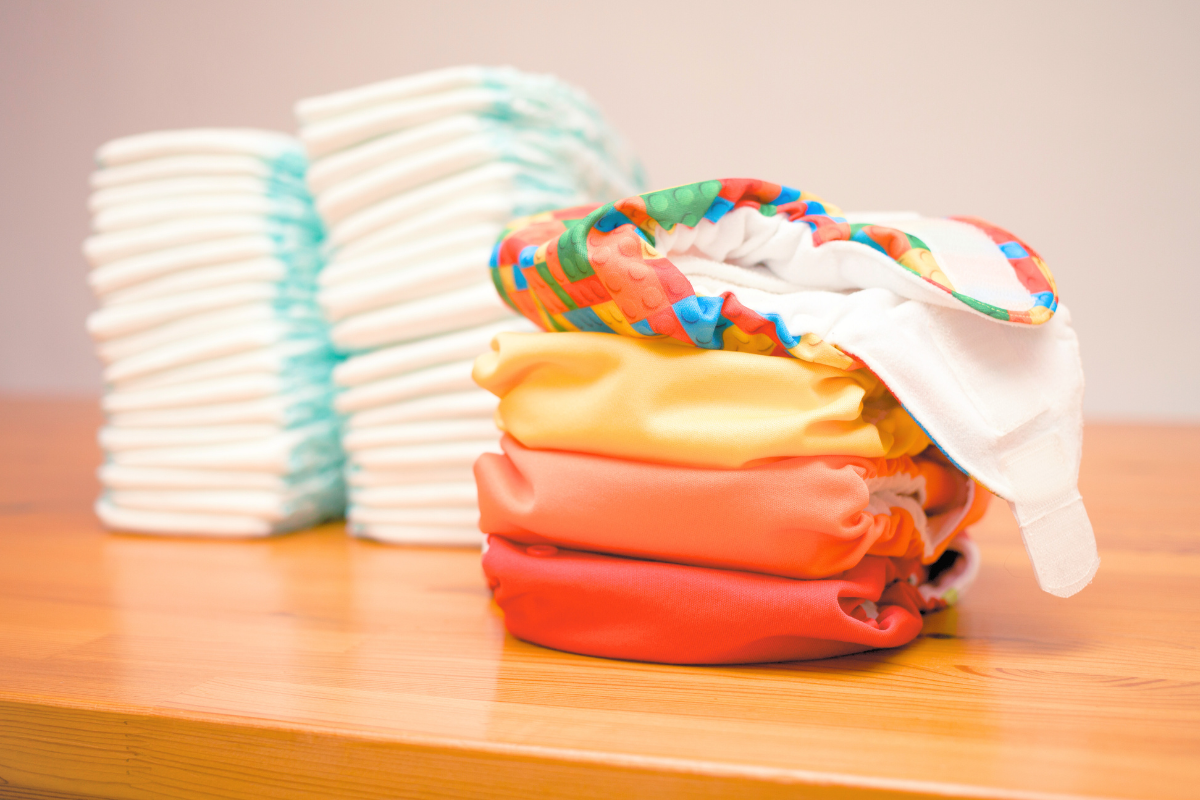
Using cloth diapers may feel overwhelming at first, but with a simple step-by-step guide, you can master it in no time. From prepping clean diapers to handling soiled diapers, here’s everything you need to know to make cloth diapering a smooth experience. Let's walk through it together and keep things easy.
Using Cloth Diaper Inserts
Cloth diaper inserts boost absorbency and make cleanup easier. Available in various materials like bamboo, cotton, and hemp, these disposable inserts will help keep your baby dry and comfortable throughout the day. The right inserts can be customized to your baby’s needs, especially for nighttime.
Step-by-Step Guide:
-
Choose your insert. Pick bamboo or cotton for day use and hemp for overnight, as hemp is highly absorbent.
-
Place the insert. Slide the insert inside the diaper pocket or lay it flat against the diaper cover.
-
Secure the diaper. Make sure it fits snugly around the waist and legs to avoid leaks.
-
Check absorbency. If the diaper feels heavy or saggy, it’s time for a change.
-
Swap out inserts. Change the insert as needed, depending on how soaked it is.
Changing Cloth Diapers
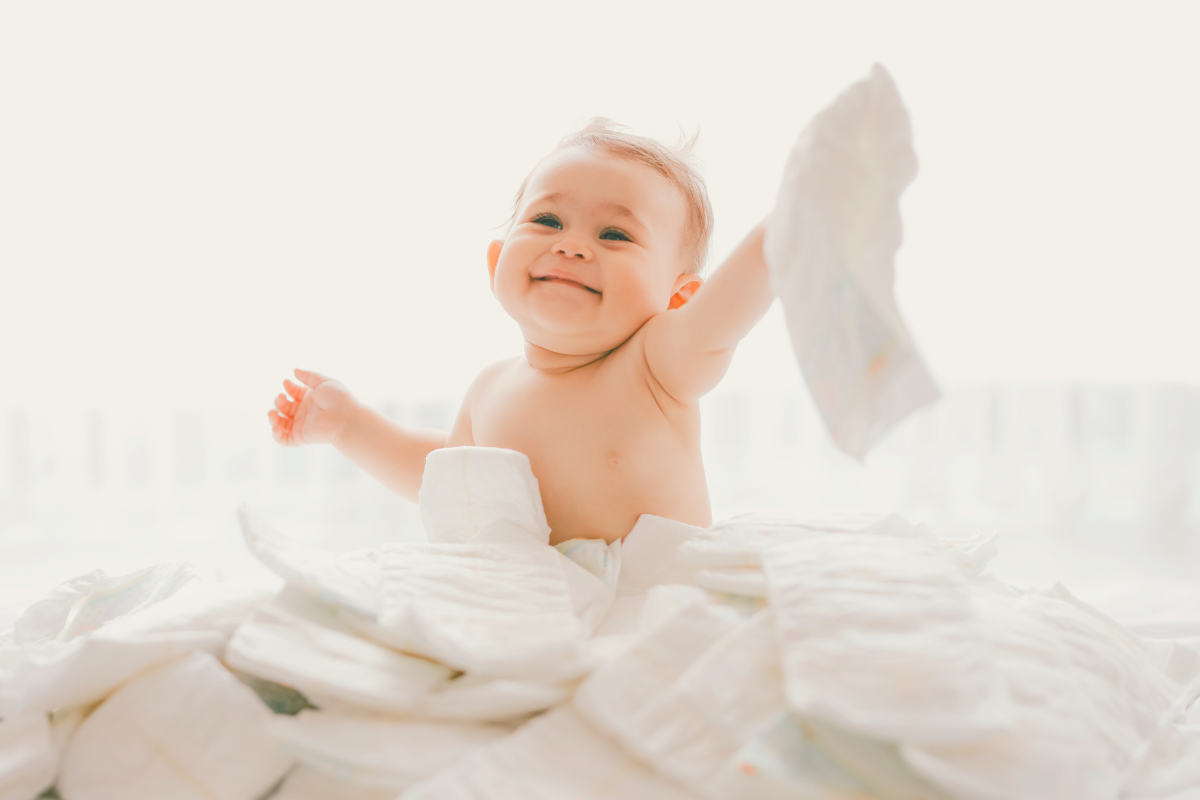
Changing cloth diapers is not much different from disposables. The key is knowing when to swap them out and handling the cleanup effectively. Pay attention to when the diaper feels stiff or heavy, signaling it’s time for a new one.
Step-by-Step Guide:
-
Remove the soiled diaper. Undo the diaper. If there’s solid waste, dispose of it in the toilet.
-
Rinse if needed. Use a cloth diaper sprayer to rinse off any mess before placing it in a diaper pail. The same thing goes for wet diapers.
-
Swap with a fresh diaper. Replace with a clean insert or new cloth diaper covers.
-
Store used diapers. Use a wet bag or pail to store until laundry day.
-
Wash regularly. Aim to wash every two to three days to keep your cloth diapers fresh and ready.
Washing Cloth Diapers
Keeping your cloth diapers clean and fresh is key to making sure they work well and last long. A proper washing routine prevents odors, staining, and residue buildup that can reduce absorbency. Let's break down the washing process, from pre-wash to main wash, to help you keep your cloth diapers in top shape.
Pre-Wash Routine
The pre-wash is the first step to getting your cloth diapers ready for a proper clean. This step helps loosen up stains and debris before the main wash.
Step-by-Step Guide:
-
Remove solid waste. While breast milk poo is water-soluble and can go straight into the wash, formula-fed baby waste is thicker and may require a quick rinse to prevent staining and buildup. You can improve your baby's poo by opting for organic milk formulas.
-
Pre-soak the diapers. Use a wet pail filled with water to soak the diapers for a few hours or overnight. This will make it easier to remove the dirt later on.
-
Quick cold wash. Run a cold rinse cycle without detergent to help remove any initial stains or buildup.
-
Store the pre-washed diapers. After the cold wash, you can transfer them to your laundry pile. Now they're ready for the main wash!
Main Wash Routine
Now comes the heavy-duty cleaning. The main wash is where your cloth diapers get a deep clean, making sure they’re ready for another round of use.
Step-by-Step Guide:
-
Load the washer. Place your pre-washed diapers in the machine, separating them from other clothes.
-
Use warm water. Set your washing machine to a long cycle with warm water for a thorough clean.
-
Add detergent. Use a cloth-specific or manufacturer-recommended detergent. Stick to about half of the usual detergent amount to avoid residue buildup.
-
Run an extra rinse cycle. After the main wash, run an extra rinse to make sure all detergent is removed.
-
Dry the diapers. Move the washed diapers to the dryer or hang them up to air dry. If drying overnight, use low heat to protect the fibers.
Helpful Tips for Washing Cloth Diapers
-
Wash frequently. Aim to wash diapers every two days to prevent odor and stains.
-
Choose the right detergent. Stick to detergents that are free from bleach and harmful chemicals to protect your baby’s skin.
-
Avoid fabric softeners. They can reduce the absorbency of cloth diapers.
-
Soak for stubborn stains. Use a wet pail and cold water to pre-soak diapers with tough stains.
-
Use a sprayer. Diaper sprayers attached to the toilet can make cleaning solids much easier.
-
Drying tip. Air drying in the sun can naturally bleach out stains and sanitize the diapers!
Cloth Diaper Accessories
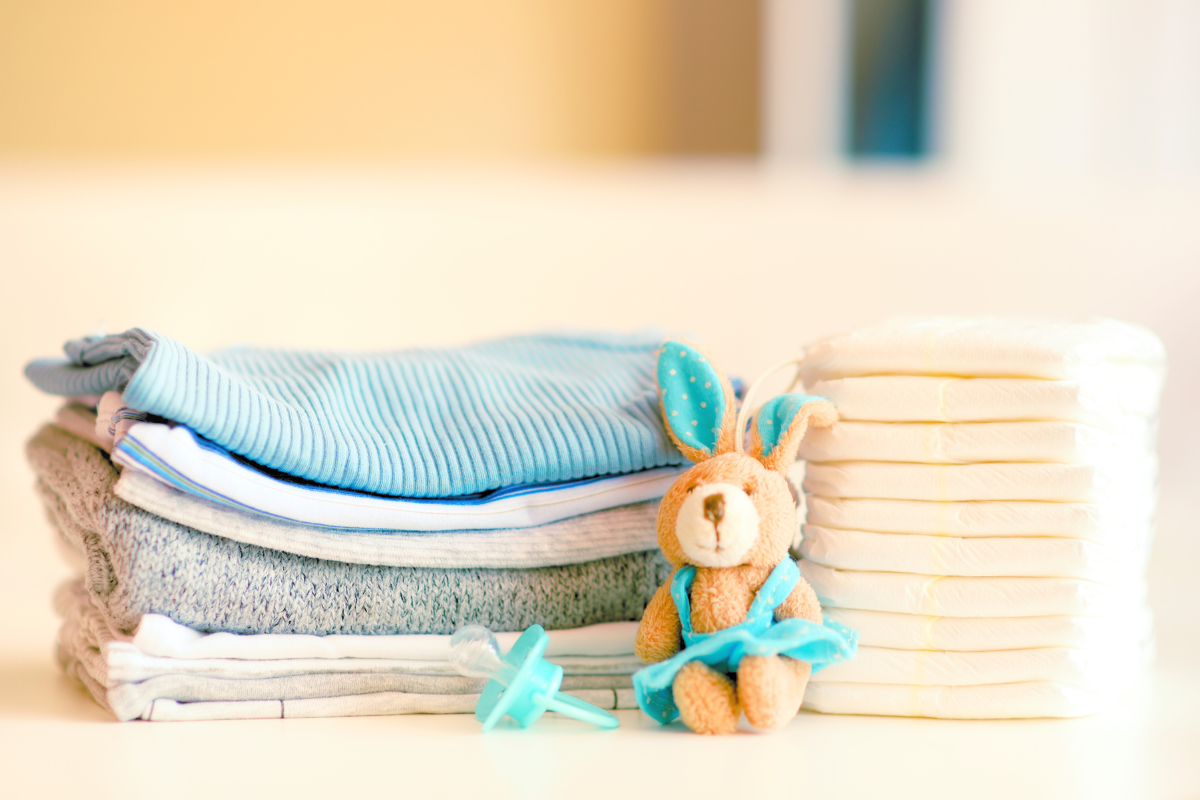
Adding the right amount hybrid cloth diapers and diaper accessories can make the whole process easier and more convenient for parents. With tools like diaper pails, wet bags, and liners, managing cloth diapers becomes much simpler. These essentials will not only streamline your routine but also help keep things clean and organized.
Here are four must-have cloth diaper accessories to enhance your cloth diapering experience:
1. Diaper Pail
A diaper pail is perfect for storing soiled cloth diapers until it’s time to wash them. The dry pail method is simple—just line a trash can with a washable pail liner or an old pillowcase. This keeps the diapers dry, reducing odors and mildew risk. For added freshness, sprinkle a bit of baking soda to manage smells. Pro tip: Leave the pail uncovered to allow the diapers to air out, reducing bad odors even more.
2. Wet Bag
A wet diaper bag really is your on-the-go solution for dirty diapers. Made from waterproof materials, these bags keep wetness and smells contained when you’re out and about. Wet bags are washable and come in multiple sizes—perfect for storing anywhere from 3 to 15 diapers. Plus, they’re great for keeping things organized at daycare or travel.
3. Diaper Covers
Cloth diapers can sometimes leak, especially with heavy wetters. This is where diaper covers come in handy. They’re designed to go over cloth diapers, adding an extra layer of protection. Most covers are made from waterproof fabrics like PUL, offering a snug fit to keep messes at bay. And don't worry, they come in plenty of cute patterns!
4. Diaper Sprayer
For an extra clean, a diaper sprayer makes life easier when handling solids. Attach it to your toilet to rinse off diapers before placing them in the pail. It's like a mini power wash that makes pre-washing diapers less of a mess. Sprayers also help prevent stains and reduce the hassle of dealing with poop-filled diapers.
Quick Tips for Washing Cloth Diapers:
-
Rinse thoroughly: Always rinse out solids with a diaper sprayer.
-
Pre-wash: Run a cold rinse cycle before your main wash.
-
Wash every 2-3 days: Keep things fresh and avoid odor buildup.
-
Use gentle detergents: Choose cloth-diaper-safe detergents that don’t leave residue.
Common Cloth Diapering Challenges
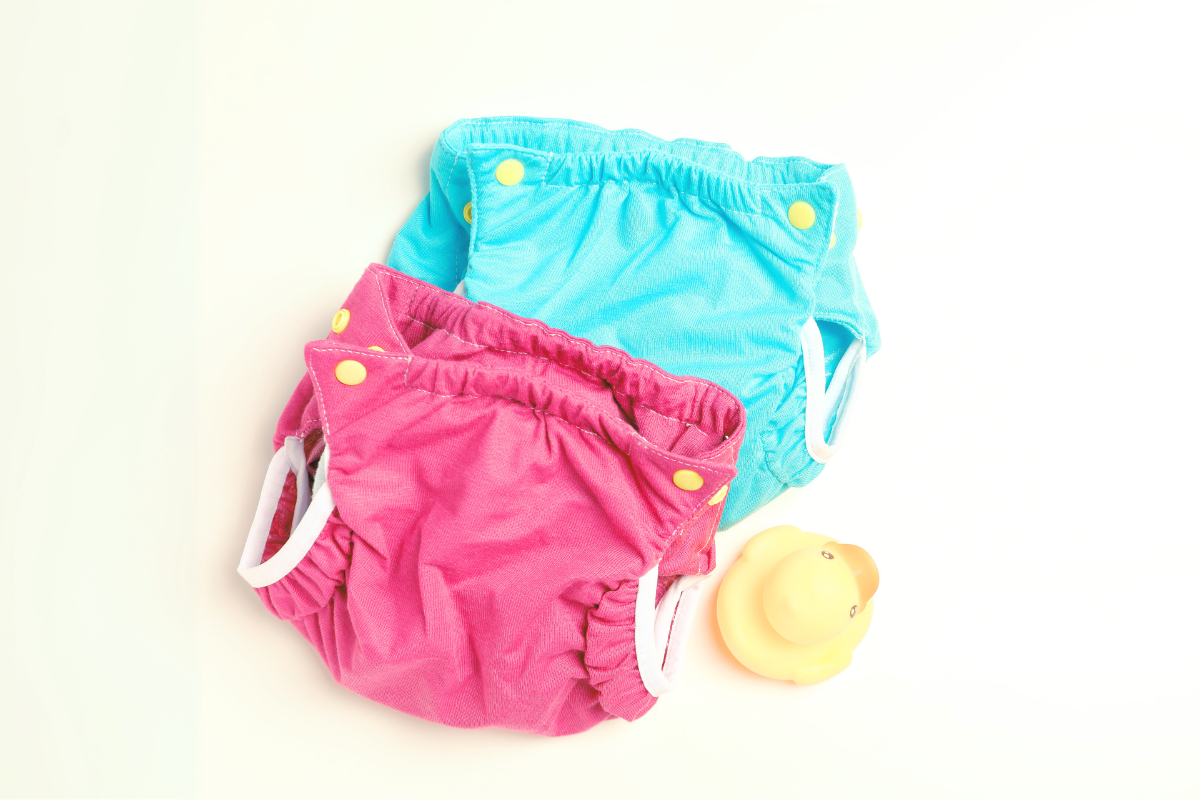
Cloth diapering can feel like an adventure with some unexpected twists. While the eco-friendly and cost-saving perks are big wins, there are a few hiccups along the way.
But don’t worry—none of these challenges are deal-breakers. Let’s talk through four of the most common cloth diapering challenges and how to handle them like a pro.
1. Leaks
Leaks are a cloth diapering reality, but they don't have to be a constant headache. Usually, they happen when the diaper fit isn’t quite right. Make sure the diaper is snug but not too tight by adjusting the snaps or leg gussets. A well-fitted diaper can do wonders to stop those leaks.
Also, try using absorbent inserts or layering inserts for extra protection, especially at night. If leaks keep happening, experiment with different disposable insert and types or combinations.
2. Diaper Rash
Even though cloth diapers are kinder on sensitive skin, diaper rash can still sneak up on you. The trick is to keep the diapers clean and free of detergent residue.
Cloth-friendly creams are a must. Skip anything with fish oil as that doesn't play well with fitted cloth diapers. One natural alternative that many parents swear by is coconut oil. Also, a solid wash routine goes a long way in keeping rashes away, so stick with that, and you'll likely see happier skin in no time.
3. Laundry Overload
The unfortunate truth is that cloth diapering adds laundry to your life. Washing diapers every couple of days is a necessity to keep things fresh. Set up a laundry routine that works for you and embrace your washer’s pre-soak setting—it’s a game-changer.
Having a couple of pail liners on rotation helps manage the chaos. When one is in the wash, the other is ready to go. It’s all about staying on top of things without letting the laundry mountain grow too big.
4. Bulky Fit
Cloth diapers can feel bulkier compared to disposables, making some outfits feel like a tight squeeze. But don’t worry! Look for trim designs or clothes that give a bit more room to breathe. Adjust the closures to keep things snug without squishing your baby, and you’ll find a balance between fit and comfort.
Cloth Diapering Costs vs. Disposable Diapers
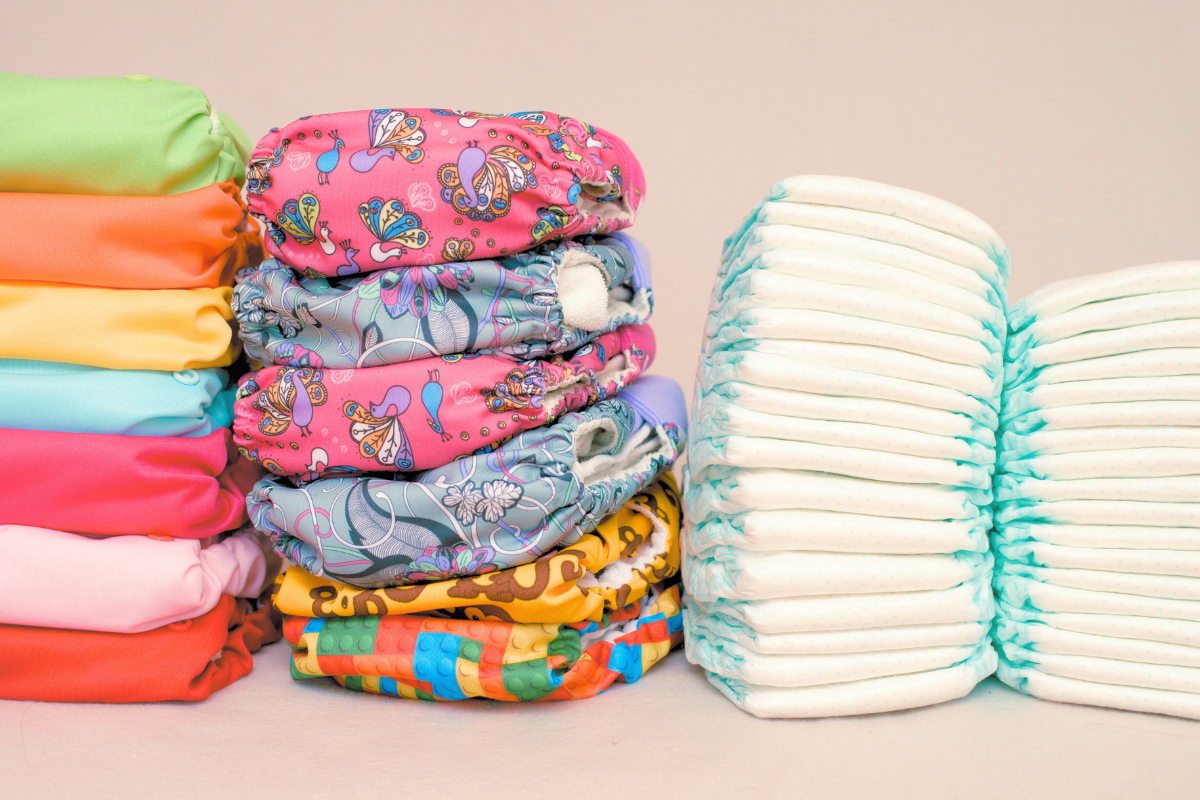
Cloth diapering can save you a significant amount compared to disposables, though the initial cost may seem higher. Here’s how the costs break down:
Cloth Diapers
-
Initial setup: Between $500 and $800 depending on the style and brand of diapers you choose. Some families may spend up to $1,500 if they opt for premium brands or larger quantities.
-
Lifetime cost: Over a span of 2 to 3 years, you’re looking at around $800 to $1,100 if you're washing them yourself, which includes detergent, water, and electricity costs.
-
Resale value: Cloth diapers have great resale potential. Parents can earn back a portion of their investment by selling gently used diapers once their baby is potty trained.
Disposable Diapers
-
Annual cost: Disposable diapers cost between $2,000 and $3,000 per year, per child. Most babies are in diapers for about 2 to 3 years, so the total cost for disposables can be as high as $6,000 to $9,000.
Key Differences
-
Long-term savings: Over time, cloth diapers can save families anywhere from $1,000 to $3,000, particularly if you reuse them for subsequent children.
-
Laundry service option: If you prefer not to wash the diapers yourself, diaper laundry services can cost between $2,000 and $2,500 for three years, which is still more cost-effective than using disposable diapers full-time.
Ultimately, cloth diapers can lead to major financial savings, especially for families with multiple children. And while they require some upfront investment, the long-term costs are much lower than disposables. Plus, when your baby is done with them, you can resell them for extra savings!
Environmental Impact of Cloth Diapers
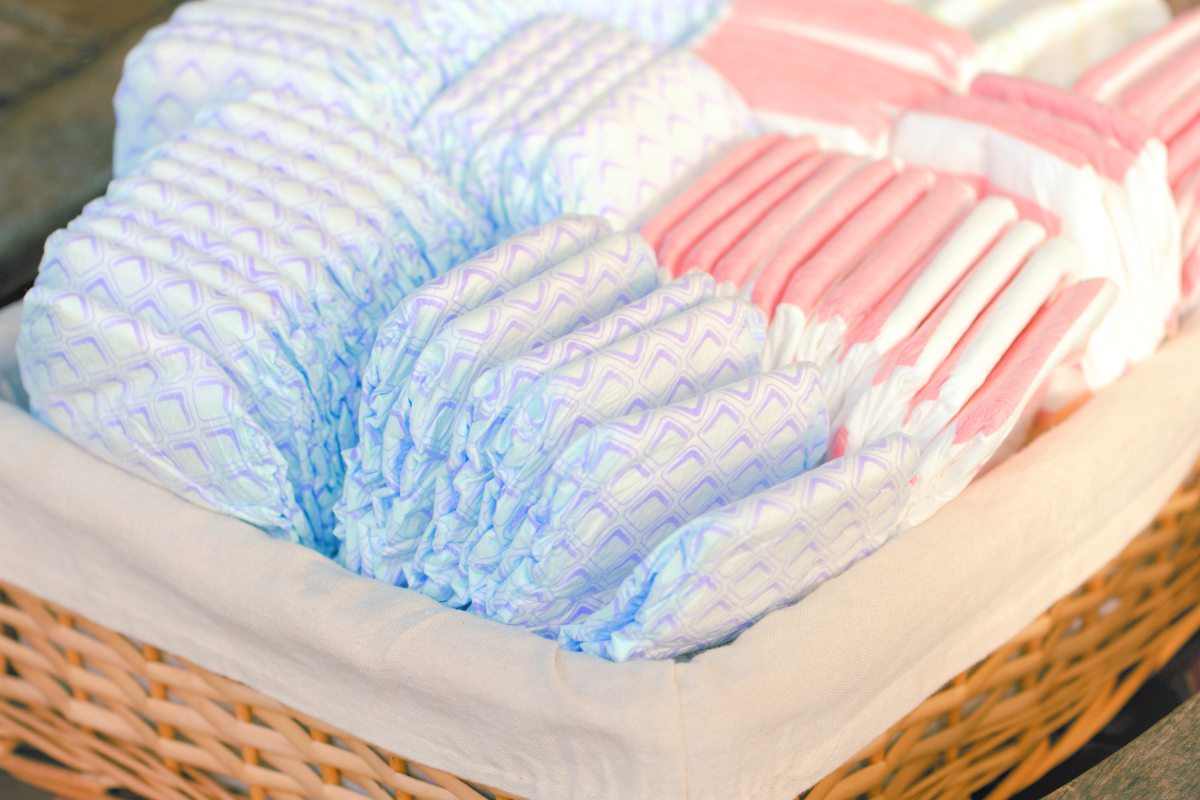
Cloth diapers are a greener alternative to disposables. Disposable diapers create tons of waste, filling up landfills and releasing harmful chemicals like CFCs as they break down. In comparison, cloth diapers are reusable and often made from natural fibers, which are more environmentally friendly.
Here's the catch: washing cloth diapers does use water and energy, which can affect their overall environmental benefits. However, efficient washing practices help minimize this impact, making cloth diapers a more sustainable choice over time.
In a nutshell:
-
Less waste: Cloth diapers reduce the massive amount of disposable diapers in landfills.
-
Biodegradable: Natural fibers used in cloth diapers break down easier than synthetic disposables.
-
Energy-efficient options: Innovations like compostable liners and eco-friendly laundry routines further improve the sustainability of cloth diapers.
Overall, even with washing factored in, cloth diapers are a more eco-friendly option in the long run, especially with modern-day advancements.
Real Parent Tips for Cloth Diapering
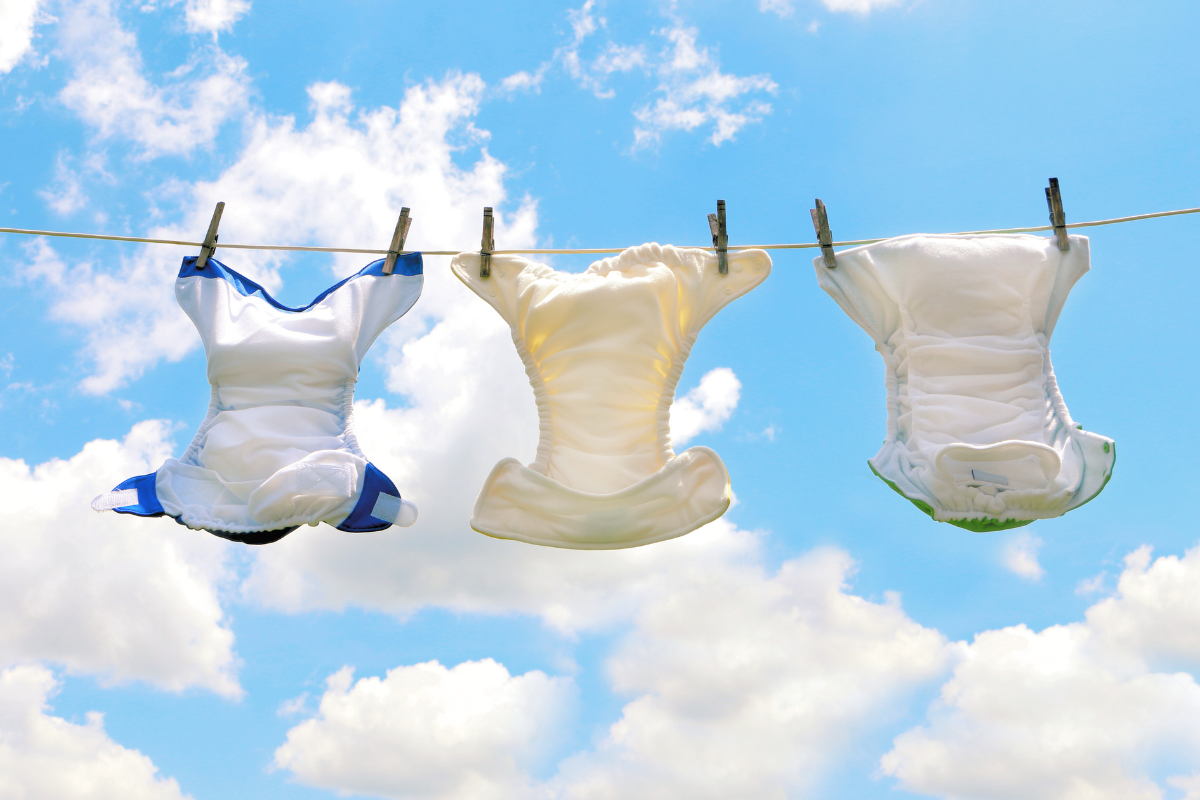
Cloth diapering may seem overwhelming at first, but learning from other parents who’ve mastered it can make the process feel much more manageable. From handy accessories to community support, these tips will help you make cloth diapering easier and more enjoyable.
-
Start with pocket diapers with inserts. A pocket diaper is easier to get the hang of for complete beginners. Bamboo inserts are highly absorbent and work well in a pocket diaper, which are easy to pre-pack, saving you time when changing your baby.
-
Prepare around 24-30 diapers. For beginners, a stash of 24-30 cloth diapers is usually enough, especially if you’re washing every 2-3 days. Flats and covers are often the most affordable and easiest system to manage.
-
Open-air storage. Keep dirty diapers in an open hamper to prevent mildew. Also, airflow is key to keeping odors at bay. Many parents suggest using two pail liners, so one is always ready to use while the other is being washed.
-
Master the washing routine. Parents swear by this washing method: rinse in cold first to remove solids, then wash on hot with a gentle detergent. Be careful with soap—too much can cause detergent buildup, while too little won’t clean the diapers properly.
-
Check for bubbles. During the rinse cycle, watch for bubbles. If bubbles remain after rinsing, you may need to wash again. Residue can irritate your baby’s skin.
-
Night-time stash. Pre-pack your night-time diapers with extra absorbency to make mornings easier. This tip is a lifesaver for making sure the nighttime routine runs smoothly.
-
Air dry to save energy. Drying all-in-one diapers on a clothesline is not only energy-efficient, but it also allows the sun’s UV rays to naturally fight stains—plus, it's eco-friendly!
Final Thoughts
So, now you know how cloth diapers work. From saving some serious cash to feeling good about making an eco-friendly choice, cloth diapering comes with a lot of perks. And yes, it might seem like a learning curve at first, but hey, once you nail down your folding game and figure out that perfect wash routine, you’ll feel like a cloth-diapering ninja.
And don’t worry, you don’t have to do this alone. Between online groups and the secondhand diaper market, there’s a whole village out there, ready to lend you tips and help out along the way. So, breathe easy, laugh at the occasional diaper mishap (there will be a few), and embrace the journey. You’re doing awesome!
Frequently Asked Questions
How many cloth diapers do I need to start?
To start with cloth diapers, aim for 20-24 diapers if you plan to wash them every 2-3 days. This quantity will ensure you have enough on hand without overwhelming laundry.
How do I prevent leaks in cloth diapers?
To prevent leaks in cloth diapers, ensure a proper fit by adjusting the rise snaps and use high-quality absorbent inserts. Experimenting with different types or layering multiple inserts can provide added protection.
Can I use regular detergent to wash cloth diapers?
It's important to use a cloth-specific or manufacturer-recommended detergent for washing cloth diapers to prevent build-up and ensure optimal absorbency. Regular detergents may not effectively clean without causing issues.
How do I treat diaper rash with cloth diapers?
To effectively treat diaper rash with cloth diapers, use the best cloth diaper-friendly diaper creams or natural remedies such as coconut oil, and make sure the diapers are thoroughly cleaned to remove any detergent residues. This approach will help prevent and alleviate rashes.




